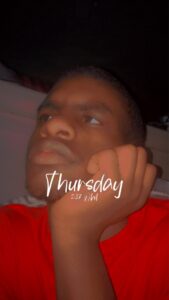

Courtesy Cleveland Classical
While growing up in Calgary, Sarah Davachi studied the piano — until it stopped engaging her. “It didn’t feel like the instrument I wanted to use to express myself,” the electroacoustic musician said during a telephone interview. “When I got the bug to make, as opposed to just play other people’s music, I started letting go of the piano.” Then, in 2007, Davachi fortuitously took a job at Calgary’s National Music Centre, which houses a large collection of musical instruments including vintage synthesizers and organs. Davachi’s life was forever changed.
On Sunday, October 6 at 7:30 pm at Transformer Station, Sarah Davachi will make her Cleveland debut with a solo concert of electronic soundscapes. The evening is part of the Cleveland Museum of Art’s Performing Arts Series. Tickets are available online.
A graduate of the University of Calgary, Davachi also holds a master’s degree in electronic music and recording media from Mills College and is currently pursuing a PhD in musicology at UCLA. Her compositions combine her interest in vintage analog synthesizers with contemporary treatment of acoustic instruments. She released her first recording, Barons Court, in 2015. Her ninth album, Pale Bloom, was released in June of this year.
Davachi noted that her live performances are quite different from what she creates for an album. “I’m not the type of artist who puts out a record and then plays that material live. That has never made sense to me. There are things you can do on a record that you can’t do live, and there are things you can do live that you can’t do on a record, so I try to take advantage of both of those. I don’t do individual tracks — it’s a single, hour-long experience.”
Although her first job at the National Music Centre was giving tours, that job sparked her interest in synthesizers as well as her fascination with pipe organs. “I remember finding synthesizers and organs about the same time when I worked at the museum. I think of the organ as an acoustic synthesizer, which it essentially is. You can create different timbres, play with harmonics, and build the sound the way that you can with a synthesizer. What’s great about organs is that they are built for specific spaces — it’s kind of like the perfect instrument because your sound-check has already been done by the organ builder and the architect.”
It was while working at the Music Centre that Davachi also became interested in electronic music. “I was listening to a lot of it, but in terms of working with, and composing with the instruments, it all kind of came together around that same time.”
Davachi recalled one of her first experiences of experimenting with one of the Centre’s vintage instruments — a Buchla modular synthesizer. “I remember putting two oscillators in tune with each other. They were from the ‘60s and the electronics at that time were not stable, so it kept drifting ever so slightly in and out of itself, creating this beautiful phasing pattern. I thought, I could just sit and listen to this for hours.”
She had a similar experience with a reed organ. “It was a pretty big one and electrically blown. I sat in front of it and just held octaves and fifths, and listened to the overtones and the subtle changes the organ and the acoustic were making on their own. It was interesting to have this slowed down — I hate to use the word psychedelic, but that’s kind of what it was.”
It goes without saying that electronic instruments have evolved considerably since their vintage counterparts were in use. And today’s vast electronic world has required Davachi to set boundaries for herself. “I have to be selective,” she said. “I also think there is something about the keyboard as an interface that translates between certain instruments. If you’re trained as a pianist you can play harpsichord, although they are very different instruments, so you have to train yourself to play harpsichord well. But I like those limitations and I like working within them. I like it that instruments have personalities. They’re little people — they have their pros and cons.”
Originally published on ClevelandClassical.com.
Sign up for Scene’s weekly newsletters to get the latest on Cleveland news, things to do and places to eat delivered right to your inbox.





